Nestled among the rivers and canals of the Mekong Delta, Ben Tre appears from afar as a lush green island. Beyond its coconut groves and vast rice fields, Ben Tre is also distinguished by its picturesque scenery and the ancient beauty of its historical and cultural sites.
On a journey to explore the cultural and historical beauty of Ben Tre, we visited Binh Hoa Temple - a venerable structure located 16 kilometers southeast of Ben Tre City.
Tucked under the shade of trees, Binh Hoa Temple retains much of its original charm with its whitewashed walls, moss-covered roof, and faded, weathered wooden screens and doors.
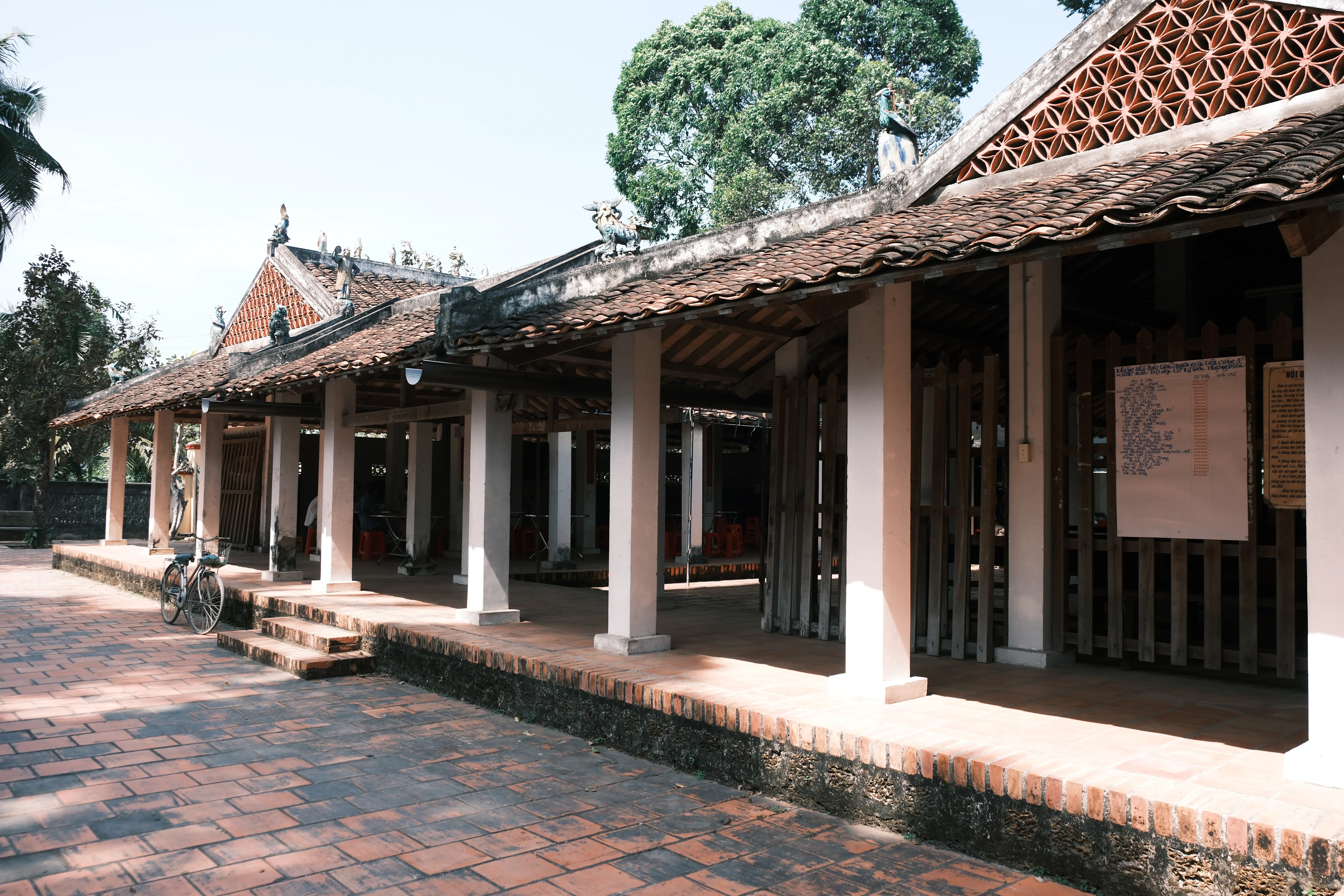
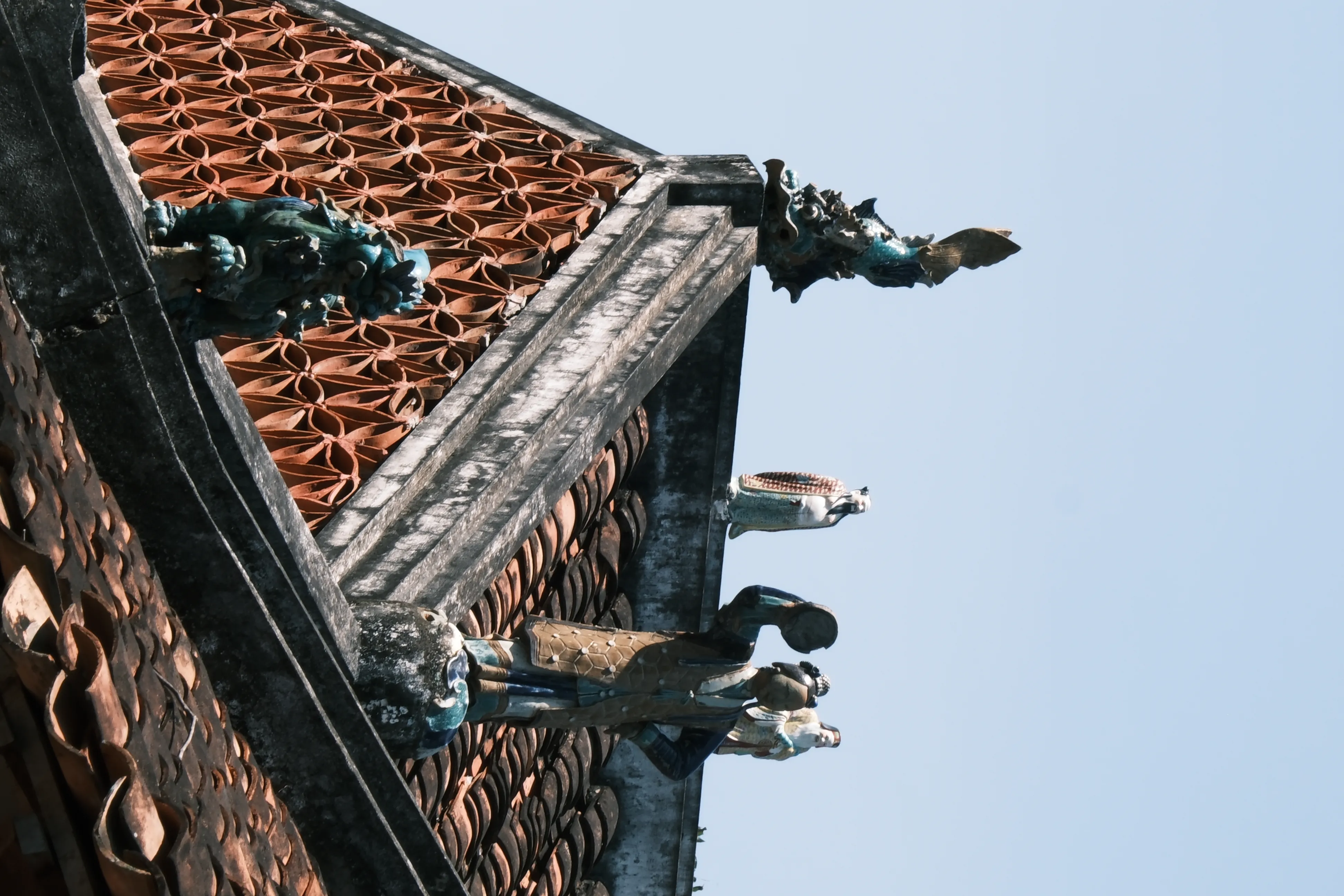
Discovering the 200-Year-Old Temple
As one of the 20 most famous temples in "the Land of Coconuts" - Ben Tre, Binh Hoa Temple is also a National Architectural and Artistic Monument recognized since 1993. Originally constructed with simple materials like wood, leaves, bamboo, and rattan to serve as a shrine for the village deity, Binh Hoa has undergone many changes over the centuries, evolving into a popular tourist attraction.
"Walking in the courtyard, standing under the 200-year-old eaves, and admiring the ancient tiles and bricks, we felt as if time slowed down, offering a respite from the hustle and bustle of everyday life."
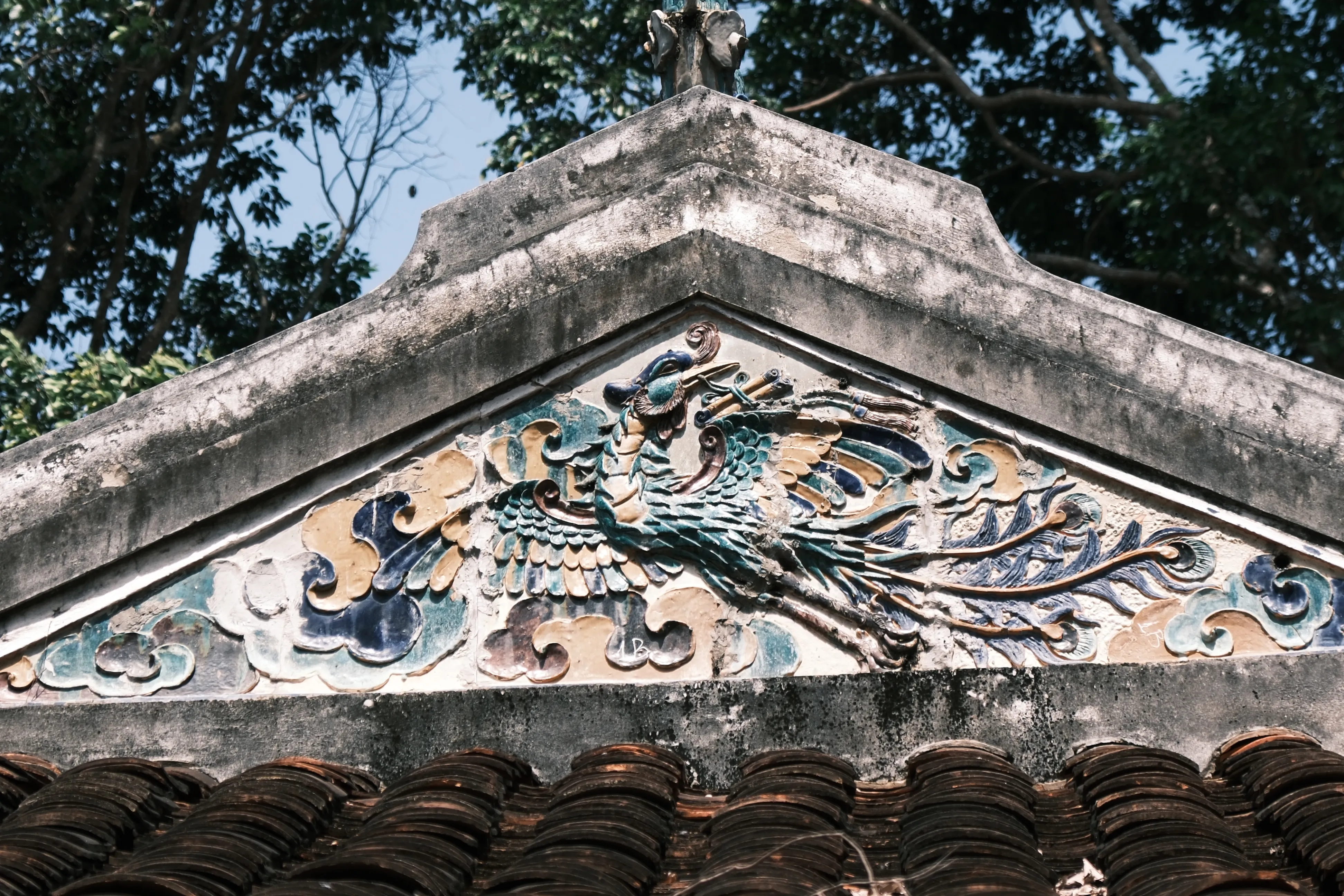
built in the early 19th century. Binh Hoa Temple initially served solely as a place of worship for the village deity. In 1852, however, Binh Hoa received a royal decree from Emperor Tu Duc (who reigned from 1847 to 1883), which transformed the modest temple into a renowned site where locals would gather for peace-seeking ceremonies and prayers for good fortune.
What Lies Beneath the Roof?
Like many notable temples in the southern region of Vietnam, Binh Hoa Temple is designed in a single-line layout (the shape of the Chinese character “yī”, meaning ‘one’.)Originally, it covered an area of about 1,485 square meters. Over the years, due to various restorations and modifications, its area has been reduced to approximately 1,155 square meters.
Constructed mainly from ironwood* using traditional joinery techniques, Binh Hoa is celebrated for its exquisite wood carving. This is especially evident in the wooden pillars, horizontal lacquered boards, and couplets.
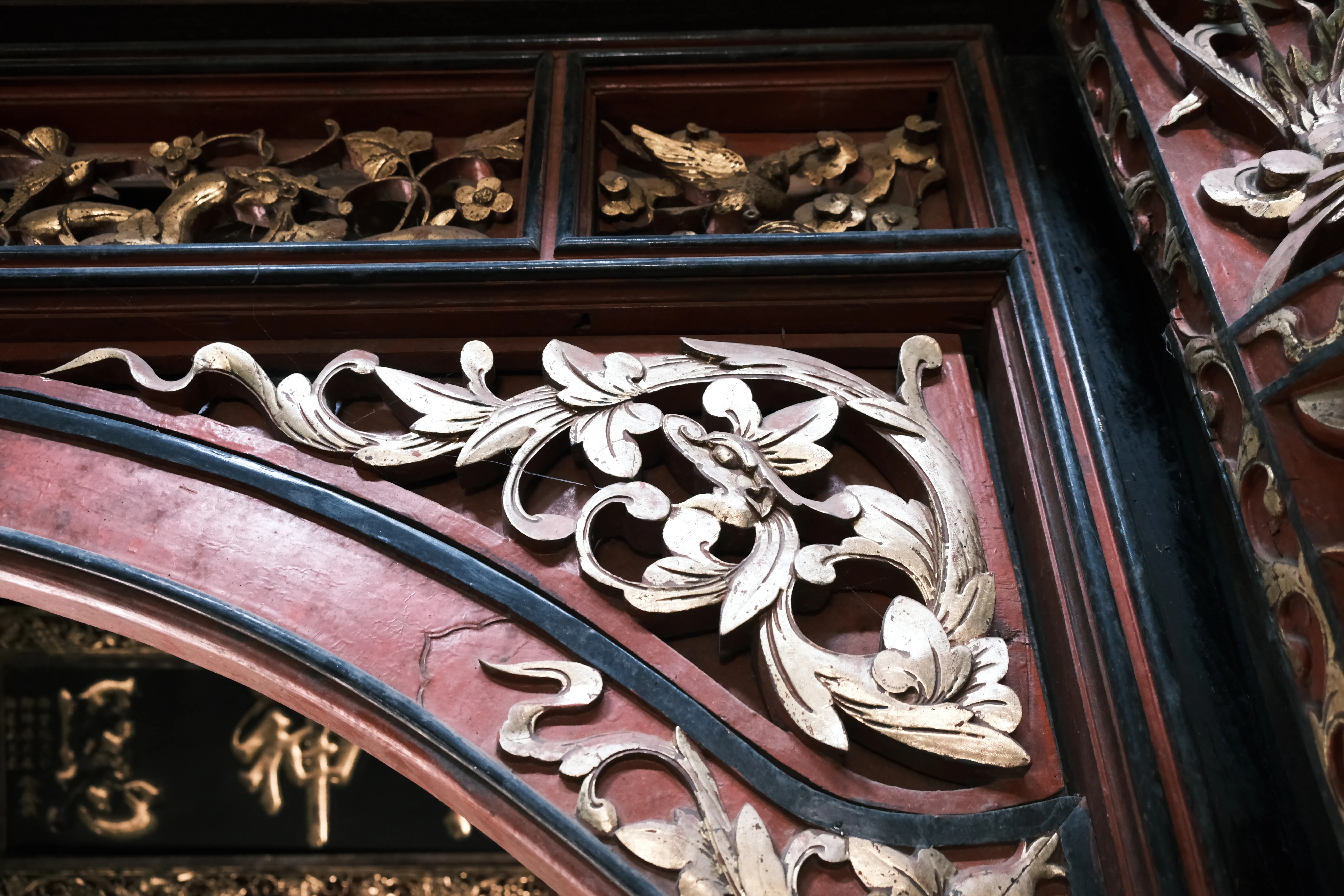
* Ironwood: Referring to the four types of wood (Dinh, Lim, Sen, Tau) known for their durability and resistance to termites, allowing their long lifespan.
** Joinery: A woodworking technique involving interlocking parts without nails, ensuring a strong bond.
Outside, the yin-yang tiled roof and intricate relief carvings emphasize the serene and rustic appearance of Binh Hoa Temple. Inside, the main and central halls house historical artifacts that have been carefully preserved.
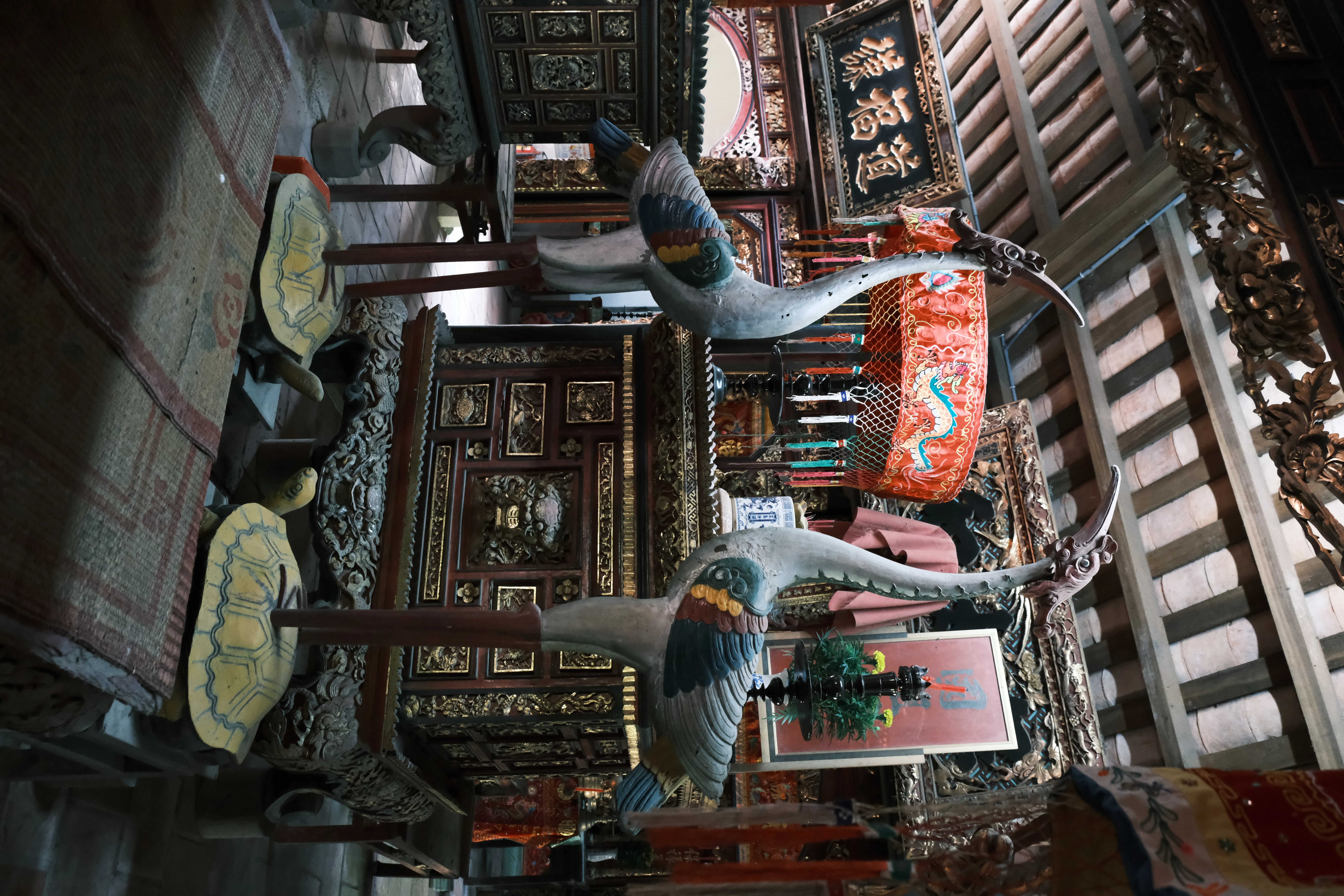
Among these is the wooden spoon and fork from an Indochinese cooking competition and costumes of classical “Vietnamese opera” (“Hát Bội”) from the previous century worn and faded as they may seem, these artifacts reflect the passage of time, evoking images of past eras and historical milestones.
In addition to these historical artifacts, Binh Hoa Temple astonishes visitors with its intricate wood carvings, blending court and religious art. From familiar religious symbols to folk motifs, every detail represents the artistic heritage of the era, religion, and beliefs.
Currently, Binh Hoa Temple preserves over 100 finely crafted wooden artifacts, including horizontal lacquered boards, couplets, altar cabinets, and ceremonial items.
Taking a few steps from the temple courtyard, we were led to an ancient stone well. The water in the well is a pale green colour, its surface calm. However, in the past, this well was used by the U.S.-backed Ngo Dinh Diem’s government to interrogate revolutionary cadres. More than 50 soldiers sacrificed their lives here.
"If it weren't for historical records and the recollections of witnesses, no one would imagine that beneath the tranquil, serene roof of Binh Hoa Temple, such atrocities occurred."
Leaving the alley leading to the temple, we returned to the vibrant life of Ben Tre. The more we experienced the development of this riverside city, the more we wished to understand the glorious history preserved in ancient structures like Binh Hoa Temple. For while cultural values may fade, history endures forever.
—------
CREDIT:
- Photography: Luan Nguyen
- Content: Giang Huynh
- Design: Luan Nguyen




















